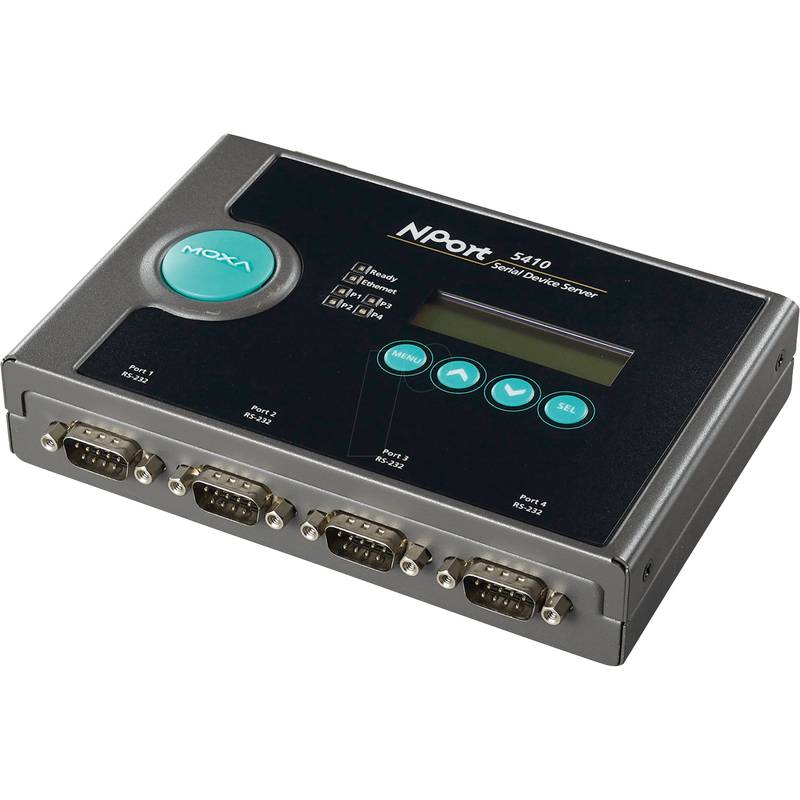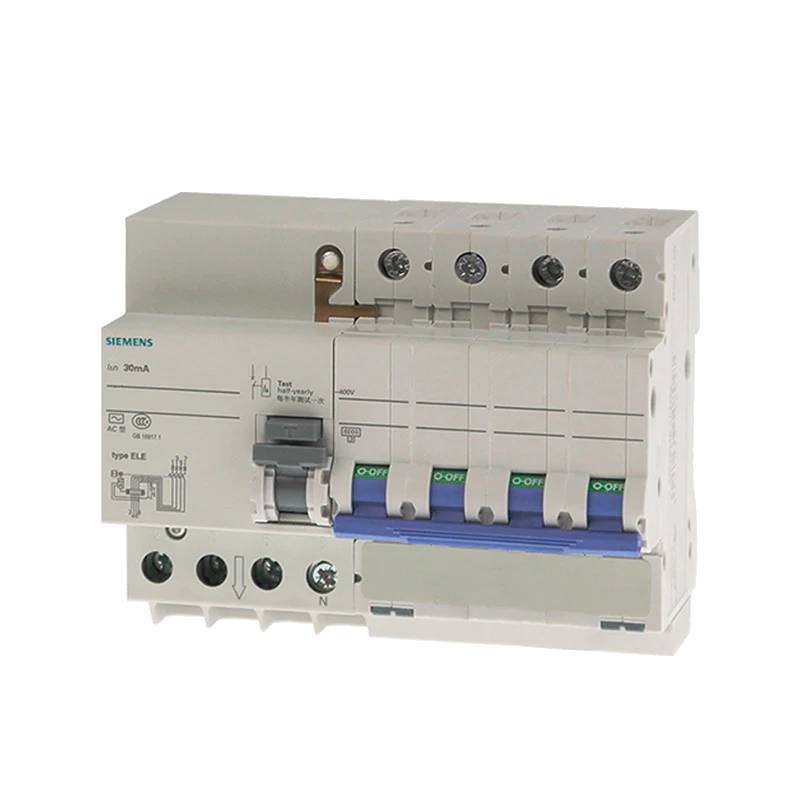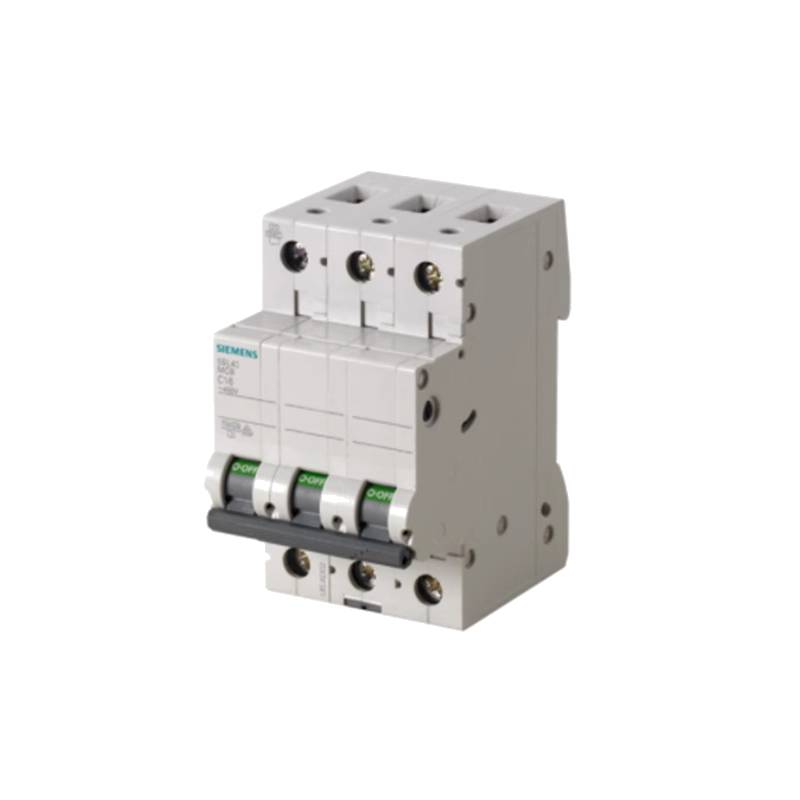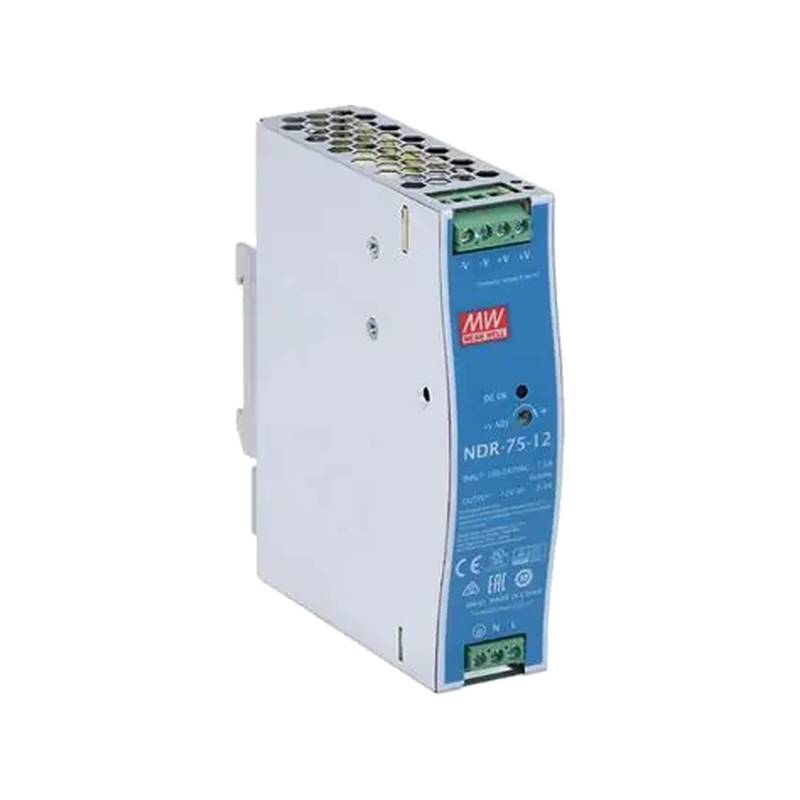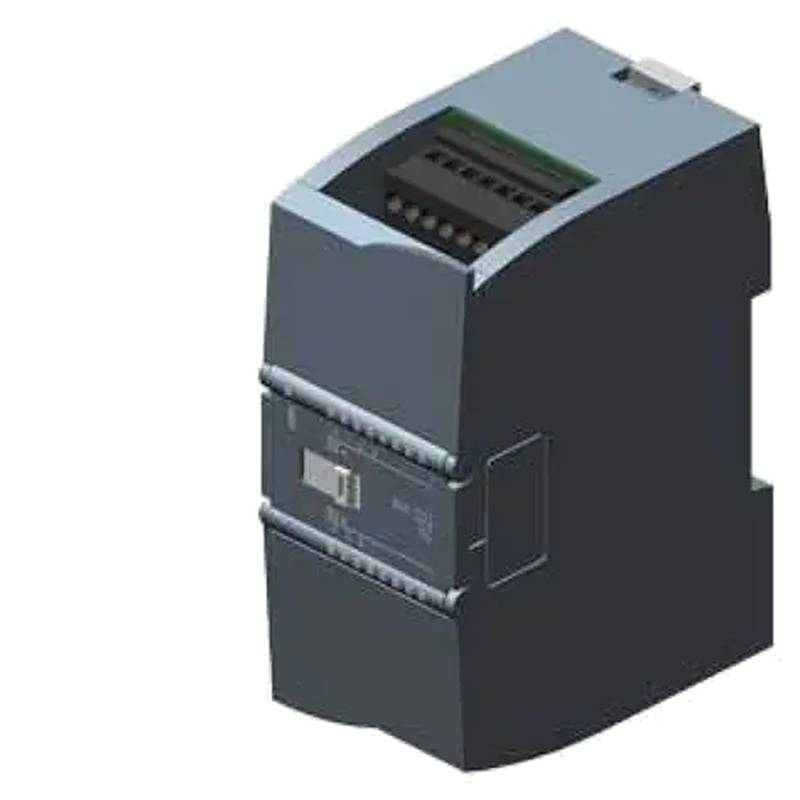
The Moxa NPort 5450 is a high-density serial device server designed to connect up to four serial devices to an Ethernet network, offering robust industrial connectivity and advanced management features. This industrial-grade solution excels in demanding environments due to its compact form factor and comprehensive protocol support. Key advantages include its ability to consolidate multiple serial connections into a single network interface, simplifying network infrastructure and reducing cabling complexity. The NPort 5450 boasts an impressive feature set, including dual Ethernet ports for network redundancy, surge protection for robust operation, and a wide operating temperature range from -40 to 75°C, making it suitable for harsh industrial settings. With support for RS-232, RS-422, and RS-485 serial interfaces, it offers versatile compatibility with a broad spectrum of industrial equipment.
Product Specifications
| Feature | Specification |
| :---------------------- | :----------------------------------------------- |
| Ethernet Ports | 2 x 10/100BaseT(X) auto-MDI/MDI-X |
| Serial Ports | 4 x RS-232/422/485 ports |
| Serial Signal | RS-232: TxD, RxD, RTS, CTS, DTR, DSR, DCD, GND |
| | RS-422: Tx+, Tx-, Rx+, Rx-, GND |
| | RS-485: Data+, Data-, GND |
| Baud Rate | 50 bps to 921.6 kbps |
| Data Bits | 5, 6, 7, 8 |
| Parity | None, Even, Odd, Mark, Space |
| Stop Bits | 1, 2 |
| Flow Control | RTS/CTS, XON/XOFF |
| Serial Connector | DB9 male |
| Power Input | 12-48 VDC, 1 x 3-pin terminal block |
| Power Consumption | 4.08 W @ 12 VDC |
| Dimensions | 150 x 105 x 33 mm (5.91 x 4.13 x 1.30 in) |
| Mounting | DIN-rail, Wall mount |
| Operating Temperature | -40 to 75°C (-40 to 167°F) |
| Storage Temperature | -40 to 85°C (-40 to 185°F) |
| Ambient Humidity | 5 to 95% RH (non-condensing) |
| Network Protocols | TCP/IP, UDP, DHCP, BOOTP, Telnet, HTTP, SNTP, |
| | ARP, ICMP, DNS, Modbus TCP to Modbus Serial |
| Management | Web Console, Telnet Console, Serial Console, |
| | Moxa PComm Port Software, Moxa MXview, SNMP |
| Security Features | SSL/TLS encryption, PAP/CHAP authentication |
Core Features & Market Positioning
The Moxa NPort 5450 distinguishes itself in the industrial networking market through its high port density and robust feature set, catering to applications where space and reliable serial-to-Ethernet conversion are paramount. Its dual Ethernet ports provide network redundancy, crucial for maintaining operational continuity in critical industrial systems, a feature often absent in lower-density solutions. The built-in surge protection on serial ports and power input offers superior resilience against electrical disturbances, a significant advantage in noisy industrial environments. Furthermore, the NPort 5450 supports a wide array of network protocols, including essential industrial standards like Modbus TCP, enabling seamless integration with SCADA systems and PLCs. This combination of density, reliability, and comprehensive protocol support positions the NPort 5450 as a leading choice for system integrators and engineers seeking a high-performance, dependable solution for modernizing legacy serial equipment.
Key Application Scenarios
The versatility of the Moxa NPort 5450 makes it ideal for a wide range of industrial automation and control applications. In manufacturing, it efficiently connects multiple machines with serial interfaces, such as CNC machines, barcode scanners, and quality inspection equipment, to a central Ethernet network for real-time data acquisition and remote monitoring. For process industries like oil and gas or water treatment, the NPort 5450 can link sensors, actuators, and control panels from distributed sites to a centralized control room, even in harsh environmental conditions due to its wide operating temperature range. Furthermore, in building automation, it facilitates the integration of HVAC systems, lighting controls, and security sensors that utilize serial communication, enhancing energy efficiency and operational management. The device's ability to handle multiple serial protocols, including RS-485 for long-distance communication, makes it a flexible choice for large-scale deployments across various sectors.
Practical System Integration Guidance
Integrating the Moxa NPort 5450 into an existing industrial network is streamlined through its user-friendly management interfaces and straightforward hardware setup. For installation, the unit can be mounted on a standard 35mm DIN rail or via the included wall-mount brackets, providing flexibility in cabinet or panel placement. Power is supplied via a 12-48 VDC terminal block, with dual power inputs available for enhanced reliability. Initial configuration is typically performed using Moxa's powerful Windows utility, PComm Port Software, or directly via a web browser by accessing the device's IP address. Users can configure serial port settings (baud rate, data bits, parity, stop bits) and network parameters (IP address, subnet mask) to match their specific application requirements. For seamless communication, the device supports various operating modes, including TCP Server, TCP Client, UDP, and Pair Connection, allowing it to integrate with diverse network architectures and applications.
Operation and Risk Mitigation
Operating the Moxa NPort 5450 involves ensuring proper network configuration and serial port settings to prevent communication errors. Critical to risk mitigation is the utilization of its built-in security features, such as SSL/TLS encryption and password protection, to safeguard sensitive industrial data from unauthorized access, especially when deployed over less secure networks. The dual Ethernet ports can be configured for network redundancy using Moxa's patented Turbo Ring or Turbo Chain technologies, drastically reducing downtime in case of a network link failure. For troubleshooting, common issues often relate to incorrect serial communication parameters (e.g., mismatched baud rates or parity) or network IP conflicts. The device's comprehensive logging capabilities and diagnostic tools accessible via its web interface or console provide valuable insights for pinpointing and resolving operational problems efficiently. Regular firmware updates from Moxa are also recommended to incorporate the latest security patches and performance enhancements.
Scalability & Long-Term Value
The Moxa NPort 5450 offers significant scalability and long-term value by enabling the modernization of legacy serial equipment without requiring a complete system overhaul. Its ability to convert up to four serial devices to Ethernet allows for a phased approach to network integration, where older machinery can be connected to newer IP-based systems incrementally. This cost-effective strategy extends the operational lifespan of existing assets. The NPort 5450 also integrates seamlessly with Moxa's broader Industrial Internet of Things (IIoT) solutions, such as the Moxa industrial gateways and management platforms, facilitating the collection, aggregation, and analysis of data from distributed serial devices. This forward-thinking compatibility ensures that the NPort 5450 can be a cornerstone of future smart factory initiatives, offering a pathway to enhanced operational intelligence and remote management capabilities.
Frequently Asked Questions
What are the main advantages of the Moxa NPort 5450 for industrial applications?
The Moxa NPort 5450 offers high-density serial connectivity, supporting up to four serial devices. Its industrial-grade design ensures reliability in harsh environments with a wide operating temperature range. The dual Ethernet ports provide network redundancy, minimizing downtime in critical operations.
How do I configure the serial port settings on the NPort 5450?
Serial port settings, including baud rate, data bits, parity, and stop bits, are configured via the NPort 5450's web interface or using Moxa's PComm utility. Ensure these settings match the requirements of the connected serial devices for successful communication.
Can the NPort 5450 connect to a Modbus TCP network?
Yes, the NPort 5450 fully supports Modbus TCP to Modbus Serial conversion. This allows seamless integration of Modbus-based serial devices with Modbus TCP industrial automation systems.
What network redundancy options are available with the NPort 5450?
The NPort 5450 features dual Ethernet ports that can be configured for network redundancy using Moxa's patented Turbo Ring or Turbo Chain technologies. This ensures continuous network connectivity even if a link fails.
Is the NPort 5450 suitable for hazardous environments?
While not intrinsically safe, the NPort 5450 is designed for demanding industrial environments with a wide operating temperature range and robust construction. For hazardous zones, other specialized Moxa products may be required.
How does the NPort 5450 handle serial port conflicts?
The NPort 5450 manages serial ports independently, allowing each to be configured with different communication parameters. Conflicts are typically avoided by proper initial setup and ensuring unique IP addresses for each device on the network.
What security features does the NPort 5450 offer?
The NPort 5450 supports SSL/TLS encryption for secure data transmission over the network. It also offers password protection and authentication mechanisms to prevent unauthorized access to the device.
How do I update the firmware on the NPort 5450?
Firmware updates are typically performed via the NPort 5450's web interface. Download the latest firmware file from the Moxa support website and follow the on-screen instructions for a smooth update process.
What is the power input requirement for the NPort 5450?
The NPort 5450 accepts a wide DC power input range, typically from 12 to 48 VDC, supplied via a 3-pin terminal block. This flexibility allows it to integrate with various industrial power sources.
Does the NPort 5450 support remote management?
Yes, the NPort 5450 supports remote management through various protocols, including Telnet, HTTP (web browser), and SNMP. This enables administrators to monitor and configure the device from anywhere on the network.














